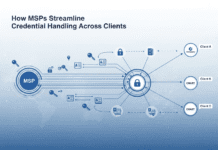In the contemporary rapidly evolving technological panorama, computer systems have become an imperative part of our everyday lives. Beyond personal use, they may be additionally transforming diverse industries, inclusive of leadership and management practices. One particular area wherein computer systems play a sizeable function is in computer vision. Computer vision is the sector of synthetic intelligence that permits computers to interpret visual records from pics and movies. By harnessing the power of computer vision, groups can revolutionize their leadership and management practices, resulting in more efficient, powerful, and data-driven selection-making strategies.
Enhancing Data-Driven Decision-Making
Leadership and management involve making vital decisions that affect the success of an organization. Traditionally, these selections had been based totally on subjective judgment and anecdotal proof. However, with the arrival of computer vision and prescience, leaders can now rely upon objective information-pushed insights to make extra knowledgeable decisions.
Computer vision algorithms can examine massive amounts of visible statistics to extract significant patterns and insights. For example, in a retail setting, computer vision may be applied to research consumer behavior by way of monitoring their movements and interactions with products. These records can then be used to optimize shop layouts, improve product placement, and enhance the overall client experience.
Similarly, in production settings, computer Vision can monitor and examine production techniques, figuring out inefficiencies or high-quality manipulation problems. This fact can then inform decision-making concerning manner optimization, aid allocation, and high-quality improvement tasks.
By incorporating computer vision and prescience into leadership and control practices, companies can benefit from access to a wealth of valuable facts that could guide selection-making, main to extra green operations, and advanced business consequences.
Improving Employee Productivity and Engagement
In addition to improving choice-making processes, computer vision can also enhance employee productivity and engagement. By automating manual obligations and lowering the executive burden, personnel can attention to higher-value work that requires human judgment and creativity.
For instance, computer vision and prescience can automate duties along with data access or photo evaluation, liberating employees’ time for extra strategic and significant contributions. Additionally, computer vision can assist in worker education and improvement by analyzing performance through visible records. By offering personalized feedback and identifying areas for improvement, computer vision and prescient can help employees enhance their capabilities and competencies.
Moreover, computer vision and prescience can also make contributions to worker engagement by enabling more customized and interactive experiences. For instance, in the discipline of human resources, computer vision, and prescience may be used in recruitment approaches to investigate facial expressions and frame language at some stage in interviews, presenting extra insights into applicants’ suitability for a position.
With these advancements, personnel can feel more engaged and empowered, leading to better tiers of productivity and process delight. By making use of custom computer vision software development and prescient technology, companies can create a greater pleasing and stimulating painting environment.
Ensuring Ethical and Fair Practices
As PC vision and prescience will become extra general in leadership and management, it’s far more important to make certain that its implementation remains moral and truthful. Computer vision and prescient algorithms are trained on large datasets, and if these datasets are biased or contain discriminatory facts, the ensuing algorithms may additionally perpetuate unfair practices.
For example, in recruitment procedures, computer vision and prescient technologies may unintentionally discriminate towards certain demographics if the schooling information generally consists of people from precise backgrounds. Therefore, it’s far crucial for corporations to carefully curate and diversify their training datasets to ensure equity and avoid perpetuating biases.
Moreover, businesses have to establish clean suggestions and rules for the moral use of computer vision and prescient technologies. These rules ought to address critical issues inclusive of privacy, consent, and transparency. Employees ought to be informed approximately how computer vision technology is utilized and take delivery of the possibility to offer remarks or increase concerns.
By prioritizing moral and honest practices, businesses can harness the strength of computer vision and prescience at the same time as mitigating ability dangers and ensuring inclusivity and diversity of their management and control practices.
Overcoming Challenges and Considerations
While computer vision and prescience offer several benefits, there also are demanding situations and issues that corporations should deal with whilst implementing those technologies in their management and control practices.
One fundamental undertaking is the need for good enough infrastructure and computational assets. Computer vision algorithms require significant computational power to system huge amounts of visual statistics, which can also necessitate investments in hardware and infrastructure. Additionally, businesses have to have strong information storage and security measures in the area to defend sensitive visible records.
Another attention is the want for professional professionals who can develop and keep computer vision structures. Building and deploying computer imaginative and prescient algorithms requires knowledge of statistics technology, device mastering, and computer vision. Organizations must either lease skills with these abilities or put money into the education of existing employees to develop the necessary competencies.
Furthermore, organizations have to take into account the ability biases and limitations of computer vision and prescient algorithms. These algorithms are nonetheless evolving, and there are instances wherein they may misread visible records or produce erroneous results. Regular monitoring and assessment of these algorithms are important to ensure their reliability and accuracy.
Conclusion
In the end, computer vision plays a pivotal function in transforming leadership and management practices in companies across various sectors. By harnessing the energy of computer vision, businesses can decorate their choice-making tactics, improve worker productivity and engagement, and make certain moral and fair practices.
However, corporations need to address the challenges and considerations related to imposing computer vision and prescient technology. By investing in infrastructure, developing important competencies, and prioritizing ethical practices, businesses can completely leverage the potential of computer vision to develop subsequent technology leadership and management practices. As technology continues to develop, embracing computer vision may be crucial for organizations aiming to remain competitive in a rapidly evolving enterprise environment.





